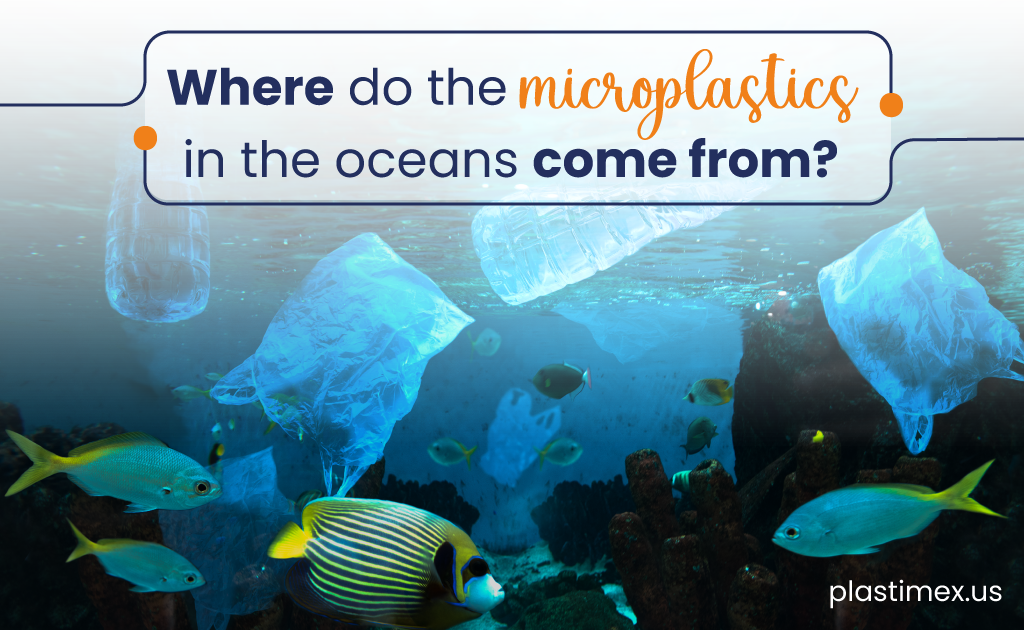La contaminación plástica es uno de los mayores desafíos ambientales de nuestro tiempo. En los últimos años, la preocupación por la presencia de microplásticos en los océanos aumentó considerablemente. Los microplásticos se definen como piezas diminutas de plástico con menos de 5 milímetros de diámetro que perjudican a los ecosistemas marinos y la salud humana. Este contaminante puede generarse mediante la descomposición de desechos más grandes, fibras sintéticas de la ropa y microesferas de productos de cuidado personal. Te explicamos las principales fuentes de microplásticos en los océanos y su terrible impacto.
¿De dónde provienen los microplásticos de los océanos?
Desechos de plástico más grandes que se descomponen con el tiempo. Una de las principales fuentes de microplásticos en los océanos son los desechos plásticos más grandes que se han descompuesto con el tiempo. Cuando los artículos de plástico como bolsas, botellas y artes de pesca se desechan en el océano, quedan expuestos a la luz solar, las olas y la vida marina. Esta exposición hace que el plástico se triture en pedazos cada vez más pequeños, convirtiéndose finalmente en microplásticosEstos microplásticos pueden permanecer en el océano durante muchos años, lo que representa una amenaza importante para la vida marina.
Fibras sintéticas de la ropa. Otra fuente importante de microplásticos en el océano son las fibras sintéticas de la ropa. Muchos tipos de telas sintéticas, como el poliéster y el nailon, desprenden fibras diminutas cuando se lavan. Estas fibras son demasiado pequeñas para ser atrapadas por filtros en lavadoras y plantas de tratamiento de aguas residuales, y pueden terminar en ríos y océanos. Los estudios han demostrado que las microfibras de la ropa constituyen una parte importante de los microplásticos en el océano.
Microesferas de productos de cuidado personal. Las microperlas son diminutas perlas de plástico que se utilizan en muchos productos para el cuidado personal, como exfoliantes, pastas dentales y jabones corporales. Cuando estos productos se usan y se lavan por el desagüe, las microesferas son demasiado pequeñas para ser filtradas por las plantas de tratamiento de aguas residuales y terminan en ríos y océanos. Incluso se han encontrado microesferas en ciertas áreas del océano, donde pueden ser ingeridas por la vida marina.
El impacto de los microplásticos en los ecosistemas marinos
Microplásticos representan una amenaza significativa para la vida marina, ya que pueden ingerirlos pequeños organismos como el plancton y también pueden acumularse en la cadena alimenticia, llegando eventualmente a los peces y otros animales marinos que consumen los humanos. La ingestión de microplásticos puede causar daños físicos en el tracto digestivo de los animales marinos, lo que provoca inanición o la muerte. Además, los microplásticos también pueden contener sustancias tóxicas que pueden ser dañinas para la vida marina y los humanos.
¿Cómo afectan los microplásticos a la salud humana?
Microplásticos pueden afectar negativamente la salud humana de muchas formas. Estas diminutas partículas de plástico pueden ingerirse a través de los mariscos y el agua contaminada, causando daños físicos y acumulación de sustancias tóxicas. Los microplásticos también se pueden inhalar, lo cual provoca problemas respiratorios, afectando directamente los pulmones. Este material también puede causar problemas dermatológicos mediante los productos de cuidado personal, ya que los químicos dañinos se absorben a través de la piel. Además, la exposición a la contaminación plástica puede causar efectos psicológicos como ansiedad y depresión.

